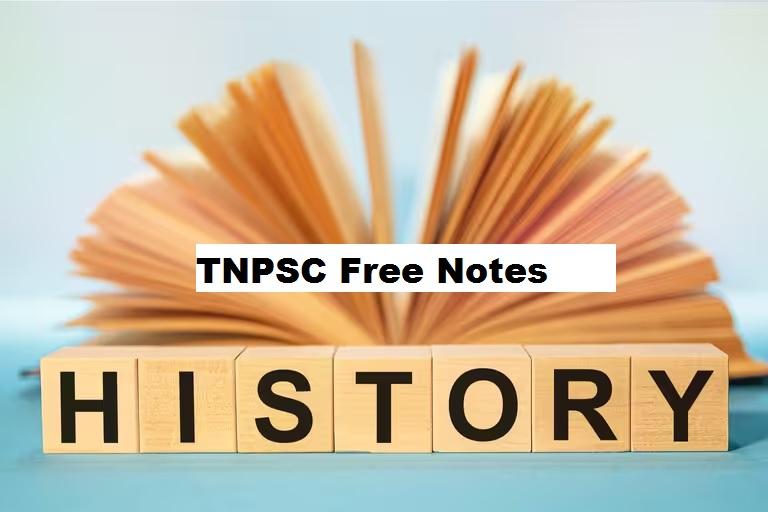இந்தக் கட்டுரையில், TNPSC குரூப் 1, குரூப் 2, குரூப் 2A, குரூப் 4 மாநிலப் போட்டித் தேர்வுகளான TNUSRB, TRB, TET, TNEB போன்றவற்றுக்கான முறைகள் இலவசக் குறிப்புகளைப் பெறுவீர்கள்.தேர்வுக்கு தயாராவோர் இங்குள்ள பாடக்குறிப்புகளை படித்து பயன்பெற வாழ்த்துகிறோம்.
Pallava Administration
Administrative Divisions
Administrative institutions followed by the Mauryan period were modified to fit for the
local people.
Vedic tradition was followed for disciplined administration.
Pallavas region extends from Nellore to Pennar river and some parts from Western
ghats to Bay of Bengal.
For Administrative convenience, the empire is divided into Mandalam, Kottam, Nadu,
and Ur.
Mandalam was followed by Rashtra, the biggest autonomous unit.
Generally, the elder was to be appointed as Yuvaraja [Pallava Prince] a Governor, while
the king was in office.
Direct control is in the hands of the king.
Nadu is a division from Kottam. It is bigger than Ur/Village.
In a village, there is a Nattar – Council of people.
Further Mandalam is divided into several Kottam/Vishayas.
Thondaimandalam consists of 24 Kottams.
Officials are appointed by Kings.
Ur is the smallest unit of all.
Central Administration
Under the Pallavas, kinship was held to be of divine origin and was hereditary.
They are the descendant of God Brahma.
The king took high-sounding titles, some of which, such as maharaja, maharajadhiraja,
dharma rajathiraja were borrowed from north Indian traditions.
The king was assisted by a group of ministers.
Council of Ministers
Mantri Mandala was a council of ministers.
Distinctions are made between amatyas and mantris. While a mantri is generally
understood to be a diplomat, amatya is a counsellor.
Rahasyadhikrita was a private secretary of the king.
Manikkappandaram-Kappan was an officer in charge of the treasury (Manikka –
valuables; Pandaram – treasury; Kappan – keeper).
Kodukkappillai was the officer of gifts.
Judiciary
Pallava dynasty has three types of courts.
Dharmasena is the highest judicial organization. King is the head of Dharmasena.
Judicial courts were called Adhikarna Mandapa and judges were called
Dharmadhikarins.
Village courts were called Karnas. Village courts dealt with petty criminal cases. There is
no harsh and cruel punishments.
Fines are mentioned in the Kasakudi plates of Nandivarma Pallava as Karanadandam
(fine in superior/ higher court) and Adhikaranadandam (fine in district level).
Land Grants & Village life
Land ownership was with the king, who could make revenue grants to his officers and
land-grants to Brahmans, or else continue to have land cultivated by small-scale
cultivators and landlords.
The villages with different caste population paid land revenue.
The brahmadeya villages were donated to a single Brahman or a group of Brahmans.
These villages tended to be more prosperous than the others because no tax was paid.
There were devadana villages, donated to a temple, and the revenue was consequently
received by the temple authorities and not by the state.
In the village, the basic assembly was the sabha, which was concerned with all matters
relating to the village, including endowments, land, irrigation, cultivated, punishment of
crime, the keeping of a census and other necessary records.
The sabha was a formal institution but it worked closely with the urar, an informal
gathering of the entire village.
The link between the village assembly and the official administration was the headman
of the village.
Irrigation
A special category of land, eripatti or tank land, was known only in south India.
This land was donated by individuals, the revenue from which was set apart for the
maintenance of the village tank.
The tank, lined with brick or stone, was built through the cooperative effort of the
village, and its water was shared by all cultivators.
Water was distributed by canals, which were fitted with sluices to regulate the water
level and prevent overflowing at the source.
The distribution of water for irrigation was supervised by a special tank committee
appointed by the village.
Irrigation Tax -Water taken in excess of allotted to a particular cultivator was taxed.
**************************************************************************
| Adda247 TamilNadu Home page | Click here |
| Official Website=Adda247 | Click here |









